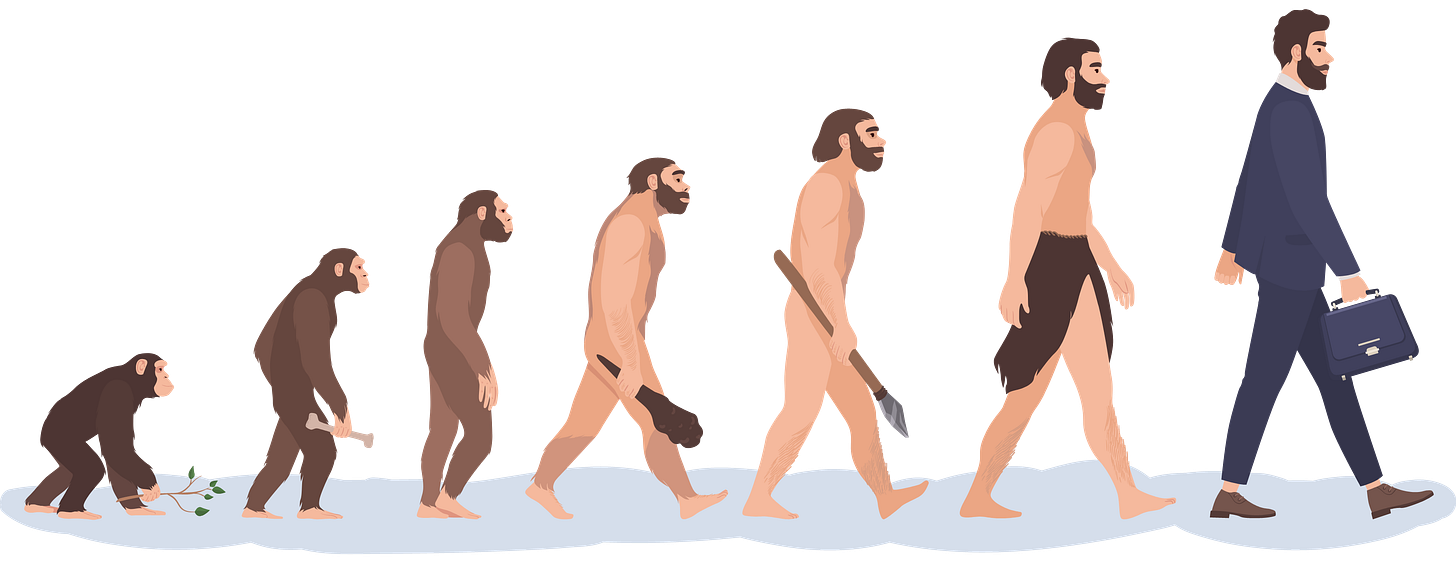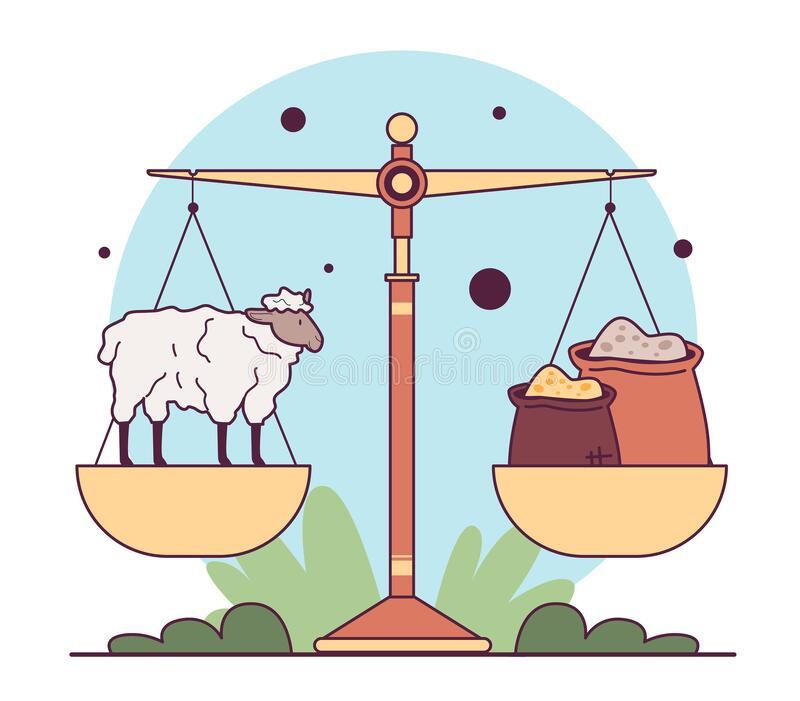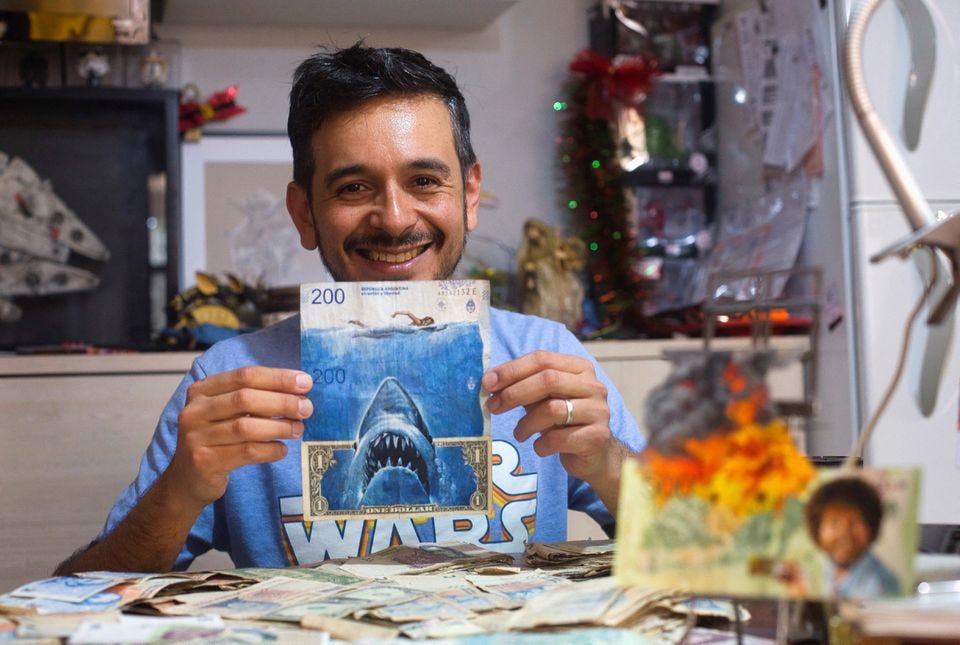Evolution of Money and change in its Intrinsic Value over Time
In general, when we talk about money, returns, and investments, everyone around us wants to get their hands on an opportunity that can make them millions and billions of money in one go.
And if not opportunity at one point or other, we always dream about having enough money to buy ourselves a personal car, a personal flat/bungalow, branded clothes, Apple gadgets, and other lavish luxuries.
And if not luxuries, some of us long for a peaceful life in the countryside.
We humans always wonder around such dreams, and at the end we always reach the same conclusion as others.
I.e. we need the tool called money to fulfill most of our dreams.
Some readers might disagree and may put forward the argument that money is a medium of exchange and shouldn’t be tagged or categorized as a mere tool.
Money can do wonders, no doubt.
It can buy you cars, it can buy you bungalows, it can feed you food and it can give you luxuries.
But after coming up to this point, what everyone has forgotten is the fact that in today’s world, money/paper-note/fiat doesn’t have any intrinsic value.
In simpler terms, it’s just a piece of paper which the government issues for the citizens of a country or a territory with no real backing or underlying value/asset behind it.
Can’t understand?
Or
Having difficulty understanding?
If yes, then that’s okay, and pretty much of a normal reaction.
I assure you by the end of this article you will be able to understand each and every aspect revolving around paper money or fiat.
To explain the topic mentioned above, let’s draw an example from the prehistoric period.
Anatomically speaking, humans came into existence around 300,000 years ago in some corner of Africa and later migrated out of the continent, replacing or interbreeding with local populations of archaic humans.
As you all know, humans of that period were mostly nomadic hunters and gatherers. They travelled from place to place and hunted every animal that appeared before them to feed off their stomachs.
Life was not easy, and every day was proportionate to a new war. It was a time filled with one prevailing idea.
I.e. Survival of the strongest!!
If you are weak, then you will die. They didn’t have any law, nor did they have any constitution promising equal rights, treatments and opportunities.
Since there was no governing body like the elected government, the concept of money, fiat, or paper currency didn’t exist during their time.
The established method for people to trade goods and services was through the route of the barter system. Literally speaking, it was a pure give and take or exchange system.
You want grains?
Then give us two goats in exchange.
You want two horses?
Then give us XYZ amount of wheat in exchange.
Such was the way of the barter system, where one thing can be exchanged for the other having an equivalent or near equivalent value.
One thing that should be noted at this point was the use of the word value in the above sentence. The humans of those periods were directly exchanging value or objects/articles/goods embedded with values, and not some paper money issued by the government.
With time, the humans developed. They left behind the stone age period and jumped towards the bronze age and iron age.
This was the time when human transactions became more sophisticated and the barter system failed to fulfill its role as an effective mode of exchange.
To understand it better, let’s take a tiny example of that period.
Say there is a boy named A, and he wants to cut his hair in the nearby shop. For offering the service of hair-cutting, the barber is asking for ready-made food that can quench his hunger.
But the boy A doesn’t have anything like that. He is a cloth merchant, and he has a surplus amount of clothes with him.
At this point, the structure of the transaction is rather complicated.
Now the boy A has to visit some other place, exchange his goods (clothes, in this case) with some other goods having equivalent value and then exchange those newly acquired goods for some food items to pay off for the services of the barber.
To solve this complex structure of transaction, humans and societies came up with the idea of molding gold, silver and bronze into small coins. These were commonly mined minerals having an intrinsic value behind them.
In simpler terms, gold, silver and bronze was used in day-to-day life, which means there was always a demand for such things. To add up more, such minerals are limited in quantity and can be categorized as exhaustible or scarce resources.
Once they all are mined, there will be no more gold, bronze and silver for the next millions of years. And this was the prevailing idea behind adopting such minerals/metals as a medium of exchange.
To summarize it all, such minerals/metals were scarce, and they were being used all over the world for different purposes.
Limited supply and unlimited demand gave these metals their value that we all are seeing today.
Notable events up to this point were the decline of the barter system and an adoption of a new system to avail goods and services. As mentioned earlier, humans were directly exchanging value or valuable goods and not some paper money.
Over the passage of time, we humans have learned many lessons from our ancestors and their actions, and one such lesson that I would like to point out is the lesson of “Utopian Perfection”.
In this world, there is no such thing as absolute good or absolute evil.
Everything has a good side and a bad side.
If a knife can cut vegetables, then the same knife can be used to take someone’s life. And such was the case with that of the precious metals.
To begin with, carrying a large amount of gold, silver or bronze was inconvenient, and to add up more, there was also a risk of robbery and an obvious threat to life.
To deal up with such shortcomings one way or other nations, all over the world came up with the idea of the gold standard. For those who aren’t aware, the gold standard is a monetary system where a fixed amount of gold is used to back every paper currency issued by the government.
In other words, a fixed amount of gold was backed/linked with the paper currencies to ensure its economic value. Whenever someone wants to get back their gold, they can deposit their paper money in the bank and redeem the gold for the same.
But as mentioned before, everything has its advantages and disadvantages and the same was also applicable to the gold standard.
The gold standard was widely used during the 19th and the early 20th century, true. But later it was abandoned and the governments all over the world moved towards the fiat system/paper money system with no gold backing.
The reasons behind such a move were quite entangled.
The first and the foremost reason, the government was busy overspending the nation’s money for its own affairs. The gold standard was adopted with the intention that the value of a note will be tied by a fixed amount of gold, which would prevent overspending by the government and would keep inflation in check.
But the events of those periods were motioning against the founding values and ethos of the gold standard.
This apart, the global gold supply was growing very slowly, which means to increase the supply of money the government would have to wait till the gold is mined, followed by keeping it in the national treasury, and then only they could spend more money.
Another major problem that rose during those periods was the problem of economic turmoil and a potential nationwide bank-runs.
As mentioned earlier, under the gold standard, anyone can redeem their gold by depositing paper money in the banks, which as a result created a heavy dependency on gold.
In fact, gold was the ultimate bank reserve in many nations. High volume of gold withdrawal from the bank’s treasury was associated with the potential risk of igniting multi level bank-runs and crippling the entire nation’s financial system.
There was also this problem where the deficit nation’s money supply fell drastically, creating deflation, low-demand and soaring unemployment, and as a result, it pushed those economies into a recession.
In the year 1971, the US president Nixon announced an end to the Gold Standard and fully shifted towards a fiat system.
The adoption of this new system gave greater control and flexibility to the central banks to adjust the money supply in the economy, followed by the argument that this system wouldn’t cause any depression or recession like the great depression of the 1930s.
Now coming back to the present, the world is already suffering from high inflation, recession and soaring unemployment. Nations all over the world are trying to tame inflation and reduce the chances of a recession, but not all of them achieved success in their endeavor.
The intrinsic value/underlying value behind the paper money is lost and now it’s nothing more than a worthless piece of paper.
The most recent news about the worthlessness of paper currency can be pulled out from Argentina.
The fiat system and the paper currencies of Argentina has lost so much value that local artists are making paper origami and paintings with the bank notes.
In a recent interview conducted on 30th December, 2022, local artist Sergio Guillermo Diaz (L) mentioned that he finds painting on even the most valuable banknotes has become affordable.
“Nowadays it makes sense for me to paint on the largest denominated bill... I can sell it for much more than what the bill is worth,” quoted Diaz.
The annual inflation of Argentina is likely to approach and cross over 100% this year. The nation’s highest denomination of currency, the 1,000-peso note, is worth roughly $5.60 officially or only $3 in parallel markets (per Reuters).
Another not-so-recent example is the great demonetisation planned and executed by India’s Prime Minister Mr. Narendra Damodardas Modi.
With a single decree from the prime minister, all thousand and five hundred rupee notes were rendered worthless overnight.
Though this action was taken to fight corruption and bring back black money from outside, it also speaks about the worthlessness and non-existing value of the paper currencies.
Another relevant example is the case of Sri Lanka where political corruption crashed the price of the Sri Lankan Rupee by over 40%.
Fiat money is flexible and easy to use, no doubts regarding that but as mentioned multiple times it also has its own set of drawbacks.
The future is full of unimaginable events, and it’s better to be prepared for the worst than to act arrogant and turn a blind eye towards it.
From now on, try to create value and use it to generate money/paper currency.
Don’t run after money and instead run after knowledge of financial literacy.
Don’t waste too much time on movies, serials, dramas, animes, mangas, and instead invest that time in learning about assets and asset markets.
Want to learn more?
Then signup with NyaSen Publications













